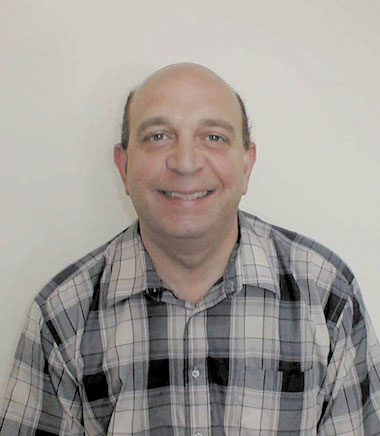Chris Tozlian
Staff Writer
One of the twentieth century’s greatest post-modern slogans simply states, “The only constant is change.” Irrespective of the truth (or the lack thereof) of this statement, the simple thought of an ever-changing society is a source of uncertainty for many, myself included. In the March 2004 edition of Hye Sharzhoom, I wrote concerning the stability offered to me by this student organization-led newspaper. In fact, I had the opportunity to interview two former editors, John Jabagchourian and Matthew Maroot.

Recently, I interviewed two more former editors, Bill Erysian and Arakel Arisian. Erysian was one of the founding editors of Hye Sharzhoom, beginning in 1979, and worked with the newspaper for three years.
Arisian began writing for the newspaper in the fall of 1997, later becoming editor. He continued working with Hye Sharzhoom through the fall of 1999.
The interviews began with a question asking which section of the newspaper was their favorite. Erysian said, “Without a doubt, the opinion pieces in Hye Sharzhoom have always been my favorite part of the newspaper.” He continued by saying that, “opinion pieces are an essential element in any publication.”
Conversely, Arisian explained that his favorite section of Hye Sharzhoom dealt with the current on-campus news that the newspaper covered and other informative pieces, such as the regular updates on Armenia.
Next, the two men discussed the personal benefit that each derived from being a part of the Hye Sharzhoom legacy. Erysian said that perhaps the greatest benefit was “the pride we gained from creating a quality publication on a consistent basis for so many years.” Arisian spoke of the practical benefit that he gained; one example was the visual presentation skills he gained while working on the newspaper’s layout, which he has been able to utilize in the business sector. He added that, from a journalistic standpoint, simply learning about every aspect of creating a publication has been beneficial for him.
Later in the interview, Erysian explained that Fresno State students and faculty benefit from the quarterly Hye Sharzhoom because it “ensures that Fresno State students (and faculty) recognize there is a consistent voice from the Armenian student population of the university.” Arisian echoed this sentiment in his response, saying that Hye Sharzhoom encourages a strong Armenian presence on campus and, at the same time, it adds to the cultural diversity present at Fresno State.

Both interviewees were also asked to explain how the community as a whole benefits from Hye Sharzhoom. Arisian said that the Hye Sharzhoom provides a stable source of information for the Armenian people, providing the community with a widespread information outlet. A byproduct of the newspaper is that it also keeps the Armenian community as a whole in touch with the Armenian youth, especially at the university level. Erysian similarly stated, “Hye Sharzhoom has always been a focus of interest in the Armenian community, both locally and worldwide. The Armenian community sees the publication as an essential source of news and information about the Armenian Studies program at CSU Fresno and about issues affecting Armenians everywhere.”
At the end of the interview, both men spoke regarding the success of Hye Sharzhoom over the last twenty-five years. Arisian enumerated multiple reasons why the newspaper has been successful: Hye Sharzhoom has remained connected to both Fresno State and to the Armenian Studies Program, it has consistently received tremendous student support, the universality of the topics covered have encouraged a broad reader interest, and the continual support of both Dr. Dickran Kouymjian, Haig and Isabel Berberian Professor of Armenian Studies, and Professor Barlow Der Mugrdechian, have enabled the students to succeed in producing an impressive newspaper. Erysian, drawing the same conclusion, concisely responded that Hye Sharzhoom’s long-term success stems from “maintaining its consistency and its commitment to quality.”
It is this “consistency and commitment to quality” that has indeed given Hye Sharzhoom its strong reader base and continual benefactor support; it has also given the Armenian students on the Fresno State campus a voice that extends throughout the Central Valley and to the whole world. It is to Hye Sharzhoom’s constant, unchanging presence that we say, “Best wishes for another twenty-five years!”
 Hye Sharzhoom Armenian Action
Hye Sharzhoom Armenian Action